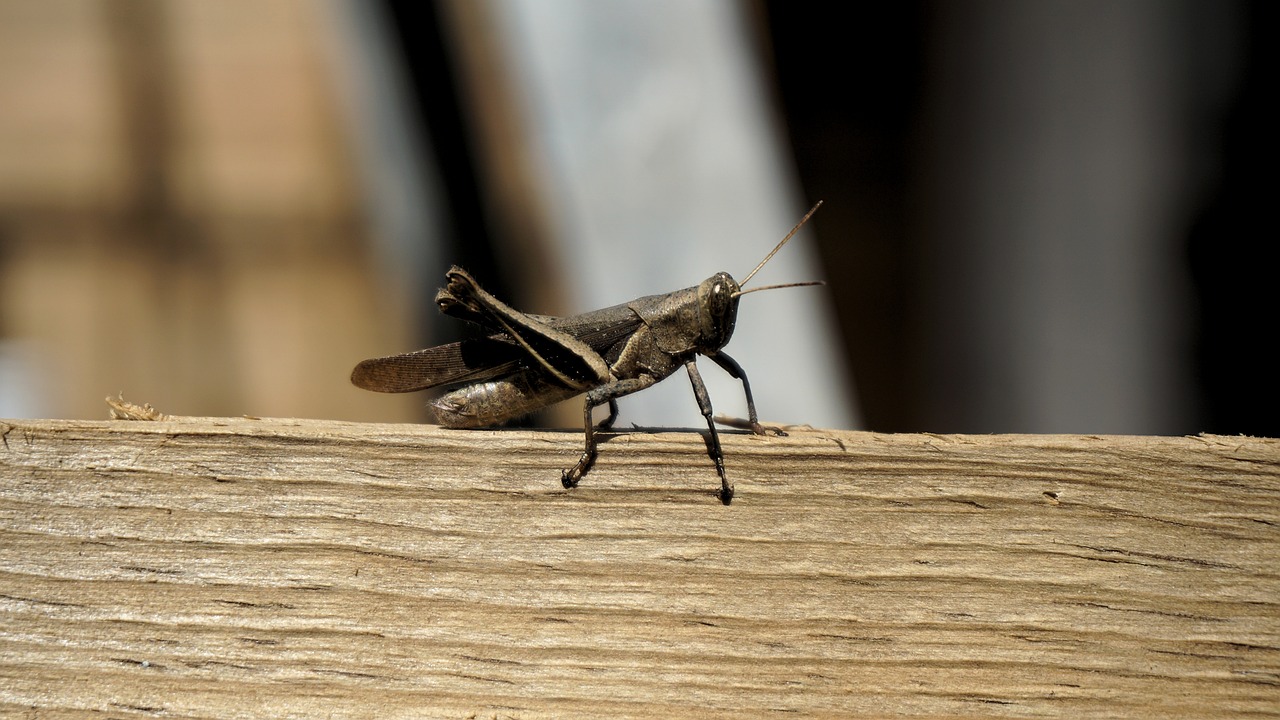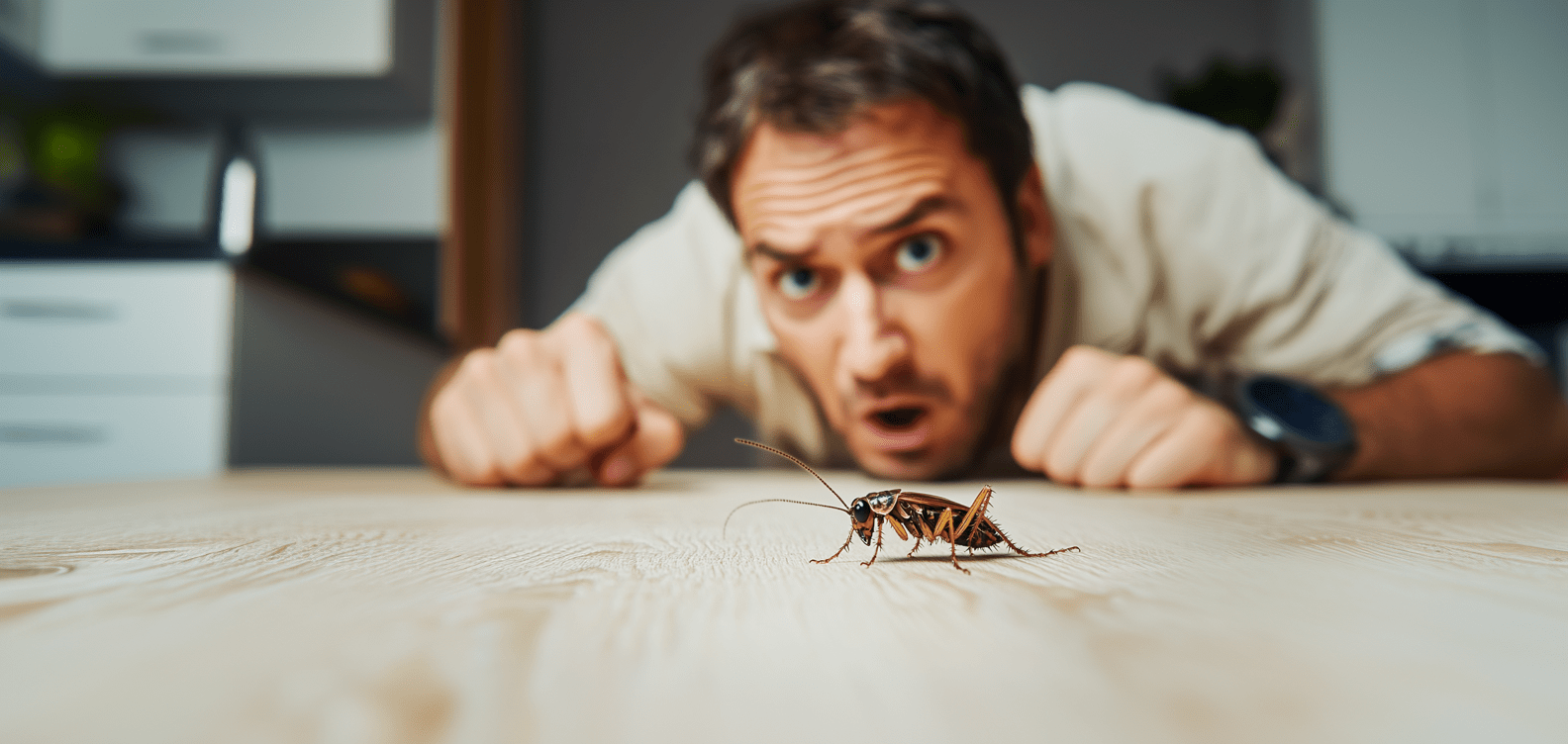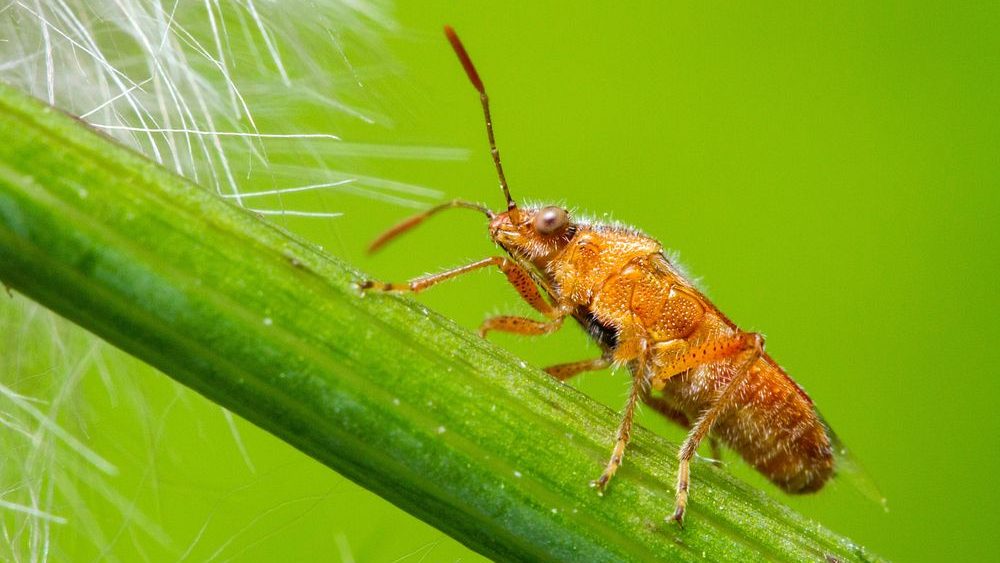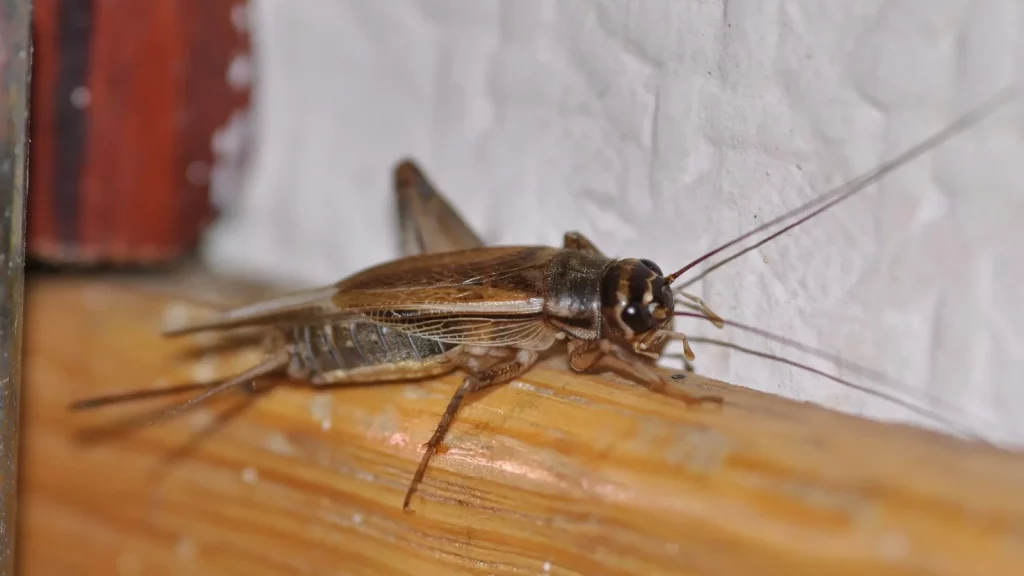Key Takeaways
- Crickets chirp primarily for communication, including mating and territorial signals.
- Chirping is most common at night due to reduced noise and predator visibility.
- Crickets produce chirping sounds through stridulation using their wings.
- Temperature influences chirping frequency, as explained by Dolbear’s Law.

What are Crickets ?
Crickets are small, nocturnal insects known for their distinct chirping sounds produced by males rubbing their wings together to attract females. They have cylindrical bodies, long antennae, and powerful hind legs adapted for jumping. Crickets thrive in warm, moist environments and commonly inhabit grassy areas, gardens, and sometimes indoors. While generally harmless, crickets can become nuisances when they invade homes, gardens, or agricultural spaces, feeding on plants, fabrics, and stored foods.Why Do Crickets Chirp ?
There are different types of crickets and chirp is their primary mode of communication, with male crickets taking on the responsibility of producing these distinctive sounds. Chirping serves as a critical tool for survival and reproduction, allowing males to convey specific messages through their songs. One of the main reasons male crickets chirp is to attract mates. These mating calls, characterized by specific frequencies and rhythms, signal the male’s health and fitness, helping females identify strong genetic partners. The sound of the chirps plays a crucial role in the selection process, ensuring successful reproduction. Chirping also serves as a territorial signal. Male crickets use loud, continuous chirps to assert dominance and claim their territory. This behavior acts as a warning to other males, reducing the likelihood of direct confrontations by establishing boundaries through sound. In some cases, chirping is used as a defensive mechanism. Crickets may produce warning calls to alert others of nearby predators, helping their peers avoid potential threats.

Not getting a solution?
Get your free pest control estimate today!Why Do Crickets Chirp At Night?
Crickets are nocturnal creatures, meaning they are most active during the night. Their preference for nighttime chirping is rooted in practical reasons that enhance their chances of survival and successful communication. One key advantage of nighttime chirping is the reduced background noise. The quiet environment amplifies the sound of their chirps, making it easier for females to locate males. This ensures that their mating calls are more effective in attracting potential partners. In addition to that, nighttime offers some protection from predators. The cover of darkness reduces visibility, allowing crickets to communicate with reduced risk of being spotted and attacked by predators. Crickets’ chirping behavior is also influenced by temperature. They are more active and vocal on warm nights, as these conditions are optimal for their behavior. Conversely, their chirping slows or stops altogether on cooler nights.How Do Crickets Chirp?
Crickets chirp through an interesting process known as stridulation. Male crickets have specialized structures in their forewings. One wing has a file-like structure, while the other has a scraper. When the cricket rubs these wings together, the file and scraper interact, producing the characteristic chirping sound. The frequency and pattern of these chirps depend on the species and the specific purpose of the chirp. For example, a mating call will have a different pattern compared to an alarm call. The wings of the cricket act as both the instrument and amplifier, making the chirps loud and far-reaching. Visit our Species, Control, and DIY Guide sections for additional resources on cricket and ways to tackle a cricket infestation.
When Do Crickets Chirp?
Crickets are most vocal under specific conditions, influenced by environmental factors and their biological rhythms. Below are some of the occasions when crickets often chirp:When Crickets Chirp
-
Seasonal Activity: Peak chirping occurs in late spring and summer when the environment is warm, and there is plenty of food.
-
Daily Patterns: Chirping begins at dusk and continues through the night, with some species active during the day if conditions allow.
-
Temperature Dependency: Chirping rates rise with temperature, following the predictable pattern outlined in Dolbear’s Law.
Scientific Reason Behind Cricket Chirping
Cricket chirping serves not only as a means of communication but also as a natural thermometer. This phenomenon is explained by Dolbear’s Law, which establishes a direct correlation between the rate of cricket chirps and the temperature. By keeping a count of the chirps cricket makes in 15 seconds and adding 40, you can estimate the temperature in Fahrenheit. For example, if a cricket chirps 20 times in 15 seconds, the temperature is approximately 60°F; 30 chirps indicate around 70°F. On warm evenings, people can use crickets’ chirping as a simple, natural way to estimate the temperature.
Myths & Facts About Cricket Chirps
| Myth | Fact |
|---|---|
| Crickets chirp by rubbing their legs together. | Crickets chirp by rubbing their wings together, specifically the file and scraper on their forewings. |
| Only male crickets chirp. | This is true; female crickets do not chirp as they lack the necessary wing structures. |
| Crickets chirp to warn of rain. | Crickets chirp primarily to attract mates and establish territory, not to predict the weather. |
| The frequency of chirping indicates temperature. | This is true; the rate of chirping increases with temperature and can be used to estimate it. |
| All crickets chirp at the same rate. | Crickets chirp at varying rates depending on their species and have different patterns. |





